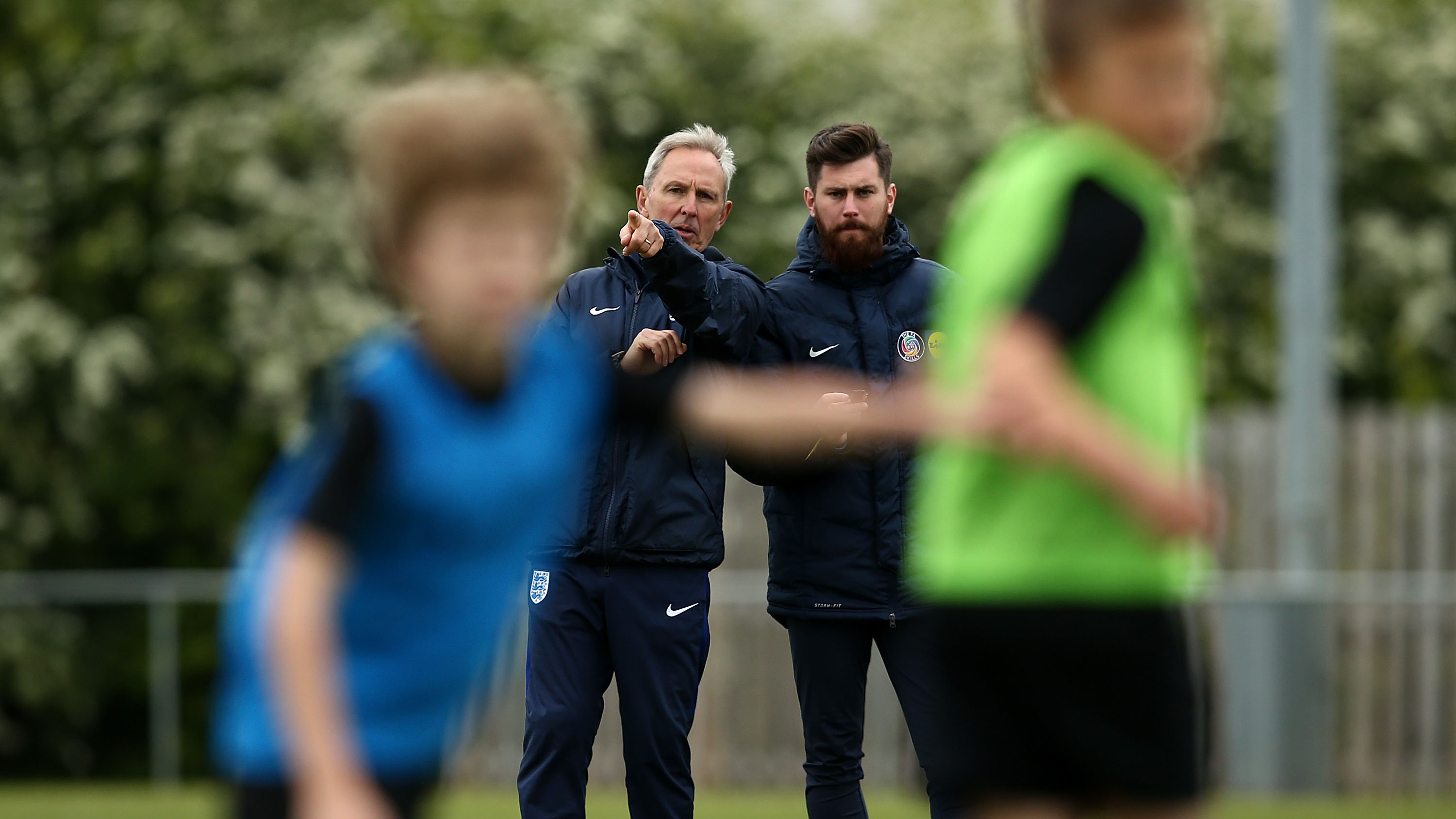
How to work effectively as a coaching pair
- Ryan Maye
- 02 January 2019
The formula for coaching pairs is often similar: one lead coach and one assistant (or observer). But is this really the best way for a coaching partnership to help develop players? Former FA youth coach educator, Ryan Maye, offers an alternative.
In my role working with academy managers and coaching staff, the development of a productive and positive multi-disciplined learning environment is vital.
To achieve this aim, one area we've focused on is the culture of coaching pairs, and the relationships and interactions that normally unfold from the role definitions of 'lead' and 'assistant' coach.
To counter the feeling that the assistant coach sometimes has limited impact on the players and, in some cases, remain an untapped resource, the idea of 'ghost coaching' emerged.
The ghost-coach concept is an attempt to maximise the role of the assistant coach who can impact, influence and work with individuals within the session – without ever stopping the flow of the practice or addressing the whole group.
With the ghost coach working ‘silently’ in the session, the lead – or momentum – coach is free to focus on meeting the curriculum outcomes, maximise ball rolling time, control work to rest ratios and observe the overall flow of the session and need for progressions.
The ghost coach is a useful tool to help support those players in the support or striving categories for any given activity
To date, it's proved a popular way of working and the coaches who have tried the idea have enjoyed planning, experimenting and enhancing their own and the players’ working environment.
Significantly, the ghost-coach methodology has helped to maximise many of the ideas and principles outlined in the England DNA coaching fundamentals, and proved powerful in maximising and supporting learning opportunities.
By adopting the ghost-coach approach, coaches have the opportunity to plan for sessions with clarity on individual coaching roles and responsibilities, ensuring interventions or information doesn't overlap or contradict.
Tops tips for introducing ghost coaching into your work
1. Supporting differentiationThe ghost coach is a useful tool to help support those players that fall within the support or striving categories for any given activity.
The ghost coach can plan to work with a number of players, using focused individual observation to provide player centred interventions that help, support or stretch the players as needed.
2. Individualised supportMany academy players now have detailed individualised learning objectives in micro, meso and macro cycles. A ghost coach can provide individual support in a variety of different ways to help achieve these aims.
- One-to-one interventions
- Drive-by Coaching
Provide the player with a concise and clear question, statement or challenge to think about without stopping them from taking part in the practice. This is often best achieved by walking past the player during the action. - Player-cam coaching
Coach takes up positions in the practice that are relevant to the pictures that the player experiences, choosing appropriate interventions and reflection strategies bespoke to the individual. - Experienced pro 'on the shoulder'
The coach shadows an individual player highlighting key triggers and cues to be picked up.
3. Planning for 'four corner' outcomesThe ghost coach may be utilised to plan, observe and support specific four corner outcomes for individuals or the whole group.
4. Themed CoachingIf the session outcome is linked to a specific way of playing, the ghost coach can work to ensure the repetition, relevance and realism of the theme by:
- Coaching an opponent
One-to-one coaching of an opponent to make the challenge harder. For example, in a 1v1 attacking session work to improve the defender, which as a by-product will increase the difficulty for the attacker. - Coach the opposition team
Coach the opposition team ensuring they play a certain way to help achieve the desired outcome. - Coach a relevant team unit to help achieve the topic
If the session is playing out from the back, the ghost coach supports the play in the back third allowing the lead coach to focus on the middle and attacking third detail. - Coach to increase the challenge
Coach the opposition to provide a greater challenge.
Maximising the interaction between a coaching pair is vital to ensuring a robust and productive learning environment, in which both coaches work collaboratively and with clear, purposeful and valuable roles.
It is crucial that at strategic points throughout the session the coaches communicate and share the coaching and interventions that have taken place or that are due to take place.
Working collaboratively in this way will enable much stronger and productive reflection and reviews, which will formulate the next set of planning.
A ghost coach should not be deemed as the role of the less experienced coach in the pairing
With many coaching pairs struggling to get together to undergo detailed planning and reflection, the ghost coach approach can also help alleviate the issue of planning time. Assuming the ghost coach knows the topic and each of the individual players, then session planning can be done independently and then brought together to ensure they complement the process and club programme.
Finally, it is important to experiment with this type of coaching. A ghost coach should not be deemed as the role of the less experienced coach in the pairing. The beauty of the ghost-coach method lies in the opportunity to intensely observe and focus on specific detail within a session and can prove a challenge for all.
Ryan Maye is currently head of coaching at West Bromwich Albion. This article was first published in The Boot Room magazine in August 2015.


